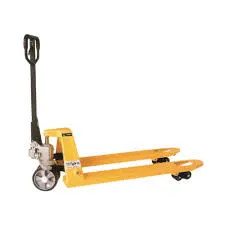


Understanding the Importance of Anti-Fall Protection in the Workplace
In various sectors such as construction, manufacturing, and warehousing, safety measures are critical to protecting workers from potential hazards. One of the leading causes of workplace injuries and fatalities is falls. According to the Occupational Safety and Health Administration (OSHA), falls account for a significant percentage of workplace incidents, which is why implementing anti-fall protection systems is of utmost importance.
What is Anti-Fall Protection?
Anti-fall protection refers to a set of safety measures, equipment, and protocols designed to prevent falls and mitigate risks associated with working at heights. These measures include the use of personal protective equipment (PPE), fall arrest systems, guardrails, safety nets, and training programs that educate workers about fall hazards and prevention techniques. These systems are essential for ensuring that employees can perform their tasks without exposing themselves to undue risk.
Types of Anti-Fall Protection Systems
1. Personal Protective Equipment (PPE) This includes safety harnesses, helmets, and safety shoes designed to protect workers from falls. Safety harnesses are particularly crucial, as they are designed to keep the worker securely attached to a stable structure.
2. Guardrails Installed on elevated platforms, roofs, or edges, guardrails serve as a physical barrier to prevent workers from accidentally falling off. They should be designed and constructed according to safety standards to ensure maximum protection.
3. Safety Nets These are installed below work areas where there is a risk of falling. Safety nets catch falling workers and tools, significantly reducing the chance of injury. They need to be properly tested and maintained to ensure their efficacy.
4. Fall Arrest Systems These systems are designed to stop a person from falling after they have lost their balance or slipped. They include anchor points, lifelines, and shock-absorbing devices that halt a fall safely.
The Importance of Training

Merely having anti-fall protection equipment is not enough; worker training is vital. Employees should be educated about the fall risks associated with their job roles and how to use safety equipment properly. Training programs should include
- A comprehensive overview of potential fall hazards in the workplace - Instructions on the correct use and maintenance of safety equipment - Emergency response protocols in the event of a fall - Regular refresher courses to keep safety top of mind
Employers must make it a priority to provide ongoing training and resources to ensure that workers remain vigilant and informed about safety practices.
Legal and Financial Implications
Non-compliance with fall protection regulations can have severe consequences. Employers may face hefty fines from regulatory bodies if they fail to implement adequate fall protection measures. Additionally, preventing fall-related incidents not only protects employees but also saves employers money in the long run. The costs associated with medical expenses, legal fees, workers' compensation claims, and lost productivity due to injuries can be significant. By investing in anti-fall protection systems and training, companies can minimize these potential financial burdens.
Creating a Culture of Safety
A successful safety program requires a cultural shift within the workplace. Employers should encourage a culture of safety where employees feel empowered to report unsafe conditions or practices without fear of retaliation. This includes regular safety meetings, open communication channels, and recognizing employees who prioritize safety in their work.
Conclusion
Anti-fall protection is an essential component of workplace safety across various industries. By understanding and implementing effective fall protection systems, providing thorough training, and fostering a culture of safety, employers can significantly reduce the risk of falls and protect their most valuable asset their employees. The investment in safety measures not only safeguards workers but also contributes to a more productive and harmonious work environment. It is crucial for both employers and employees to work together in making safety an integral part of the workplace ethos.



